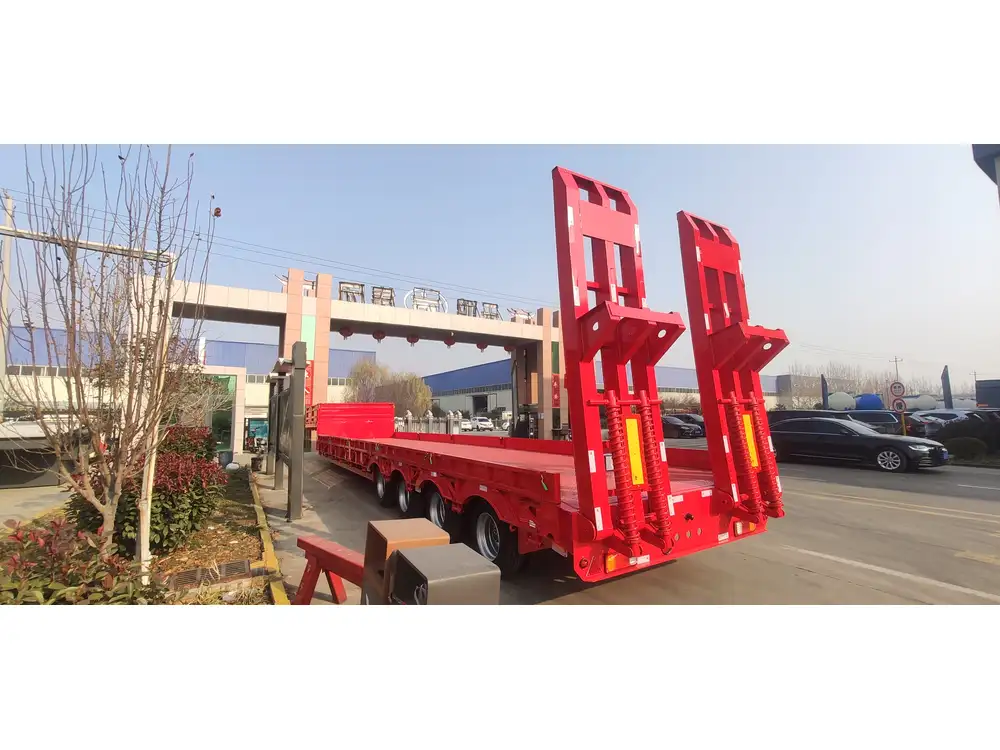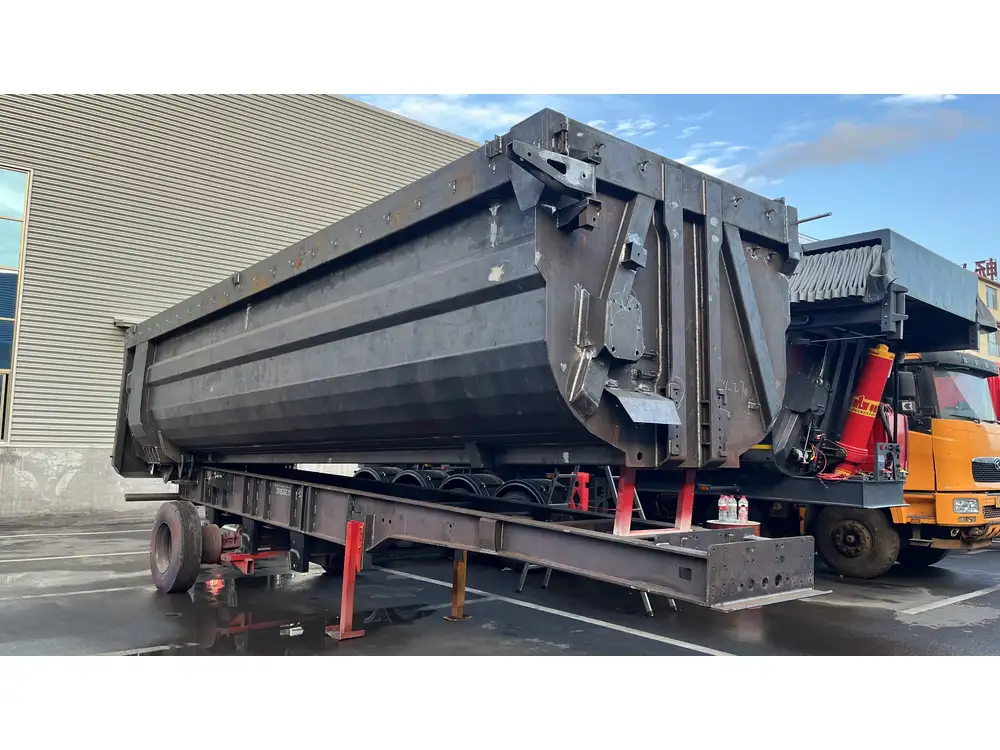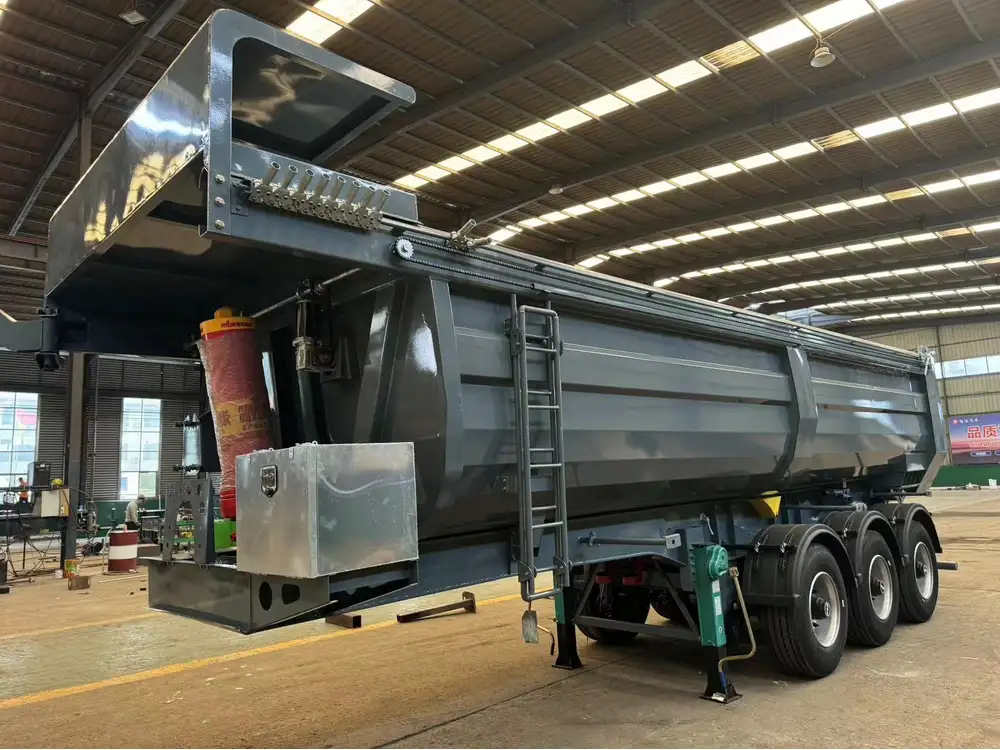Ensuring the efficient operation of semi-trailers and their corresponding air systems is crucial for manufacturers, operators, and fleet managers alike. One critical aspect of this system is supplying air to the trailer tanks. This processes is pivotal for maintaining functionality in various operations, ranging from braking systems to pneumatic functions. This article offers an in-depth analysis of how air is supplied to trailer tanks, identifying key methodologies, components, and considerations for optimization.
Understanding the Air Supply System in Trailer Tanks
The Importance of Air Supply
Air supply is essential for the operation of trailer braking systems and various auxiliary functions. In semi-trailer applications, pneumatic systems rely on a centralized air supply to ensure every mechanical operation is adequately powered. The air system’s integrity is crucial not only for performance but also for safety, making understanding the air supply mechanism vital for all stakeholders.

Components of the Air Supply System
The air supply system within semi-trailers consists of several integral components:
| Component | Description |
|---|---|
| Air Compressor | Generates compressed air necessary for the pneumatic systems. |
| Air Reservoir Tank | Stores compressed air and supplies it upon demand, maintaining system pressure. |
| Air Lines | Tubing that delivers compressed air from the compressor to various systems throughout the trailer. |
| Pneumatic Control Valves | Manage the flow of air to various applications, including brakes and air suspension systems. |
| Air Dryer | Removes moisture and contaminants from the air to prevent damage to the system. |
How Each Component Works Together
The air supply system operates through a coordinated effort of its components. An air compressor draws in atmospheric air, compresses it, and sends it to the air reservoir tank. The tank serves as a buffer, ensuring a steady supply of air, even during peak demand. Air lines transport air to different outlets as directed by pneumatic control valves, which are strategically placed to facilitate the operation of brakes, suspension systems, and other functionalities. Finally, an air dryer ensures the integrity of the air quality by removing moisture that could impact the system’s performance.
The Process of Supplying Air to Trailer Tanks

Step-by-Step Operation
Compressor Activation: The process begins with the activation of the air compressor, which is usually connected to the tractor unit’s engine.
Air Intake: The compressor sucks in atmospheric air, which is then compressed to a predetermined pressure level.
Air Storage: Compressed air is routed to the air reservoir tank, where it is stored for later use—this tank typically has a pressure gauge that indicates its pressure status to operators.
Distribution: Upon demand, air is released from the reservoir through air lines. The control valves manage the distribution based on the operational requirements of attached systems like brakes and air suspension.
Moisture Control: As air passes through the system, it goes through the air dryer, which filters out moisture before it reaches pneumatically sensitive components.
Seasonal Considerations for Air Supply
Air supply mechanisms must also be accounted for during different seasons. For example, during winter months, moisture freezes within the system, which can obstruct airflow. Equipping trailers with advanced air management systems that can handle extreme temperatures ensures reliability year-round.
Optimizing Trailer Tank Air Supply Systems

Regular Maintenance Protocols
The efficiency of air supply systems can be significantly hindered by neglect. Regular maintenance is essential and should include:
- Routine Checks: Inspect all components for wear and damage, especially air lines and seals.
- Compressor Maintenance: Perform regular servicing on compressors to ensure they operate effectively without leaks.
- Drainage of Reservoirs: Regularly draining moisture from air reservoirs preserves the quality of the air and prevents contamination.
Performance Improvement Techniques
Improving air supply efficiency can lead to enhanced performance and safety features. Consider the following techniques:
- Upgrade Components: Investing in high-quality air compressors and valves can reduce energy consumption.
- Optimize Tubing Layout: Minimize bends and sharp angles in air lines to enhance airflow efficiency.
- Implement Air Management Systems: Advanced pressure control systems can balance supply based on real-time demand.
Addressing Common Issues

Air Leaks
Air leaks remain one of the most common obstacles. Symptoms include lagging braking response or erratic pressure readings. Regular leak detection checks using soapy water can isolate problematic areas promptly.
Insufficient Air Pressure
Inadequate pressure can lead to unresponsive braking systems. Ensuring the compressor functions optimally and that the air reservoirs are adequately filled can prevent this issue. After diagnosing, consider:
| Issue | Solution |
|---|---|
| Faulty Compressor | Replace or repair the unit |
| Clogged Air Dryer | Clean or replace the air dryer |
| Improperly Sized Line | Upgrade to a larger diameter tube |
Enhancing User Understanding and Safety
It is paramount for operators and drivers to understand the air supply mechanisms. Regular training sessions can elucidate the importance of air systems, including inspections and troubleshooting. This knowledge not only enhances operational safety but can also reduce potential downtime due to unforeseen issues.

Compliance and Regulatory Standards
Trailer air systems are also subject to regulatory standards. Familiarize yourself with local transportation regulations concerning air systems, which often mandate specific specifications regarding efficiency and safety. Compliance not only fosters safe operational practices but can also avoid costly downtimes associated with regulatory non-compliance.
Summary
Navigating the intricacies of supplying air to trailer tanks requires an understanding of both technical components and operational best practices. By implementing regular maintenance schedules and optimizing system components, manufacturers and operators can ensure their air supply systems are not only functional but efficient. Addressing common challenges, staying informed on compliance standards, and educating personnel ultimately contribute to a robust air system that enhances safety, performance, and reliability.
Final Thoughts
As we conclude our exploration of how to supply air to trailer tanks, it is evident that an intricate balance of components, regular maintenance, and user education is paramount. By focusing on optimization strategies, addressing potential issues effectively, and maintaining compliance with regulations, manufacturers and operators can ensure the air systems within their semi-trailers perform at the pinnacle of efficiency. With an informed approach, the goal of seamless air supply—and by extension, safe and effective operation of trailer tanks—becomes achievable.



